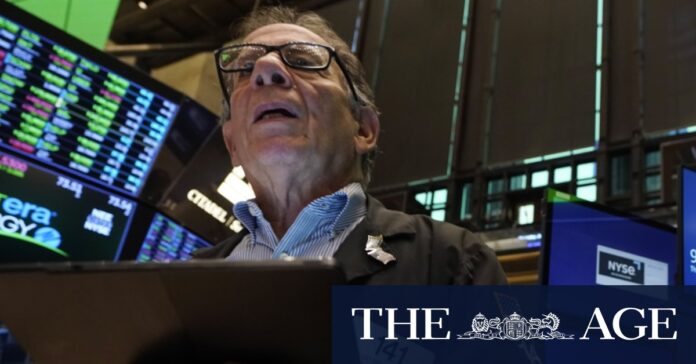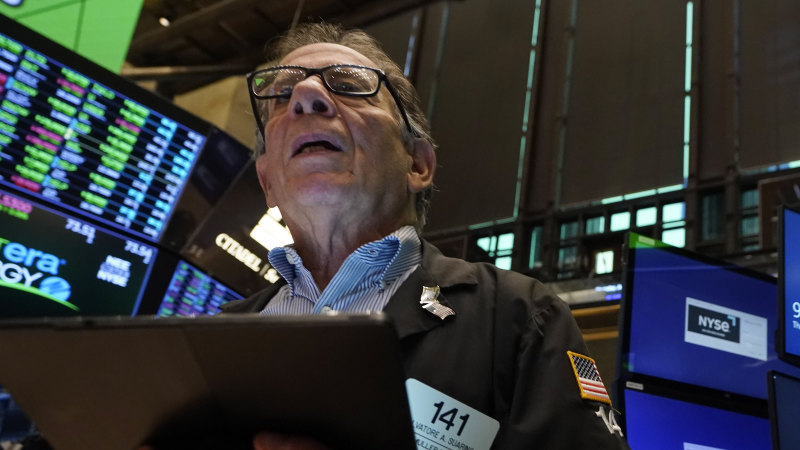[ad_1]
Yields have been dropping on hopes that inflation has cooled enough for the Federal Reserve to not only halt its hikes to interest rates but to begin cutting them sharply next year. The Fed has hiked its main rate to the highest level in more than two decades, but officials released projections last week showing they see some cuts to rates coming in 2024.
Reports on Thursday painted a mixed picture of whether the Fed can indeed pull off the long-odds tightrope walk that everyone is hoping for: a slowdown in the economy powerful enough to conquer high inflation but not so strong that it causes a recession.
One report showed that slightly more U.S. workers applied for unemployment benefits last week, but the number was still below expectations and low relative to history. The hope at the Fed and on Wall Street is that the job market can cool by just the right amount so that it doesn’t cause mass layoffs but also doesn’t add upward pressure on inflation.
Another report showed manufacturing in the mid-Atlantic region is weakening by more than expected. Manufacturing has been one of the hardest-hit areas of the economy. And a third report said the U.S. economy’s growth during the summer wasn’t quite as powerful as earlier estimated.
They “weren’t earth-shattering numbers, but they were still in line with the narrative that a cooling economy will keep the Fed on track to cut rates in the not-too-distant future,” according to Chris Larkin, managing director, trading and investing at E-Trade from Morgan Stanley.
“Right or wrong, that sentiment has played a big role in the market’s recent surge, even though the Fed has been doing its best to temper expectations.”
Wall Street has been ebullient about the possibilities for a slew of rate cuts and a resilient economy in 2024, which would both help buoy stock prices. The S&P 500 has charged 15 per cent higher in roughly two months on anticipation for those twin supports, and the index is on track for an eighth straight week of gains.
Loading
That’s despite Fed officials having penciled in far fewer rate cuts for 2024 than Wall Street. Critics say the number of rate cuts traders are expecting is unlikely unless the economy falls into a recession, which some still see as an inevitable consequence of all the rate hikes already instituted by the Federal Reserve.
That’s raised criticism that stocks have gone too far, too fast and become too expensive relative to profits that companies are earning. Even before Wednesday’s 1.5 per cent drop for the S&P 500, several strategists on Wall Street were forecasting at least a pause in the rally in the short term.
On Thursday, the S&P 500 rose 48.40 points to claw back more than two thirds of that loss and closed at 4,746.75. The Dow gained 322.35 to 37,404.35, and the Nasdaq jumped 185.92 to 14,963.87.
In stock markets abroad, indexes were mostly lower in Europe and Asia. China was an exception, with stocks ticking 0.6 per cent higher in Shanghai to trim its loss for the year by a bit. It’s one of the few markets globally that has not climbed sharply in 2023 amid hopes for easing inflation.
AP
The Market Recap newsletter is a wrap of the day’s trading. Get it each weekday afternoon.
[ad_2]
Source link



